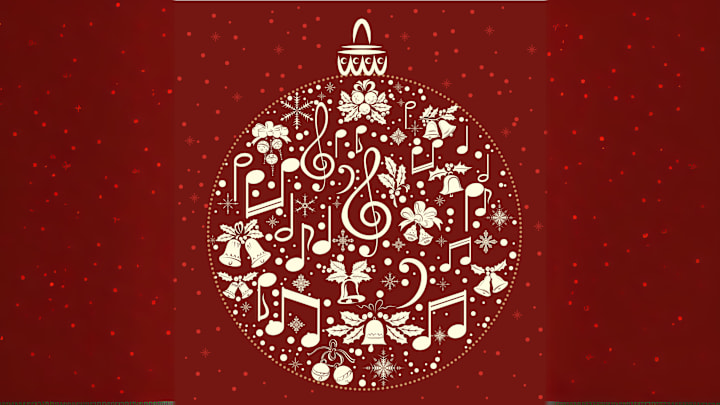It’s beginning to sound a lot like Christmas, with the voices of Mariah Carey and Michael Bublé creeping onto the airwaves. While some people have the holiday tunes blasting the second Halloween is over, others get thoroughly sick of hearing the same songs over and over again in the lead up to December 25. But whether you love them or hate them, it’s undeniable that Christmas songs have a distinct quality that makes them sound so, well, Christmassy. Here’s why—and it’s not just about those persistent sleigh bells.
Sleigh Bells, Subject Matter, and Seasonal Association
Let’s start with one the most obvious aspects of Christmas music: bells. Bells of all kinds—sleigh, tubular, and glockenspiel—chime in countless Christmas tunes. Although strongly associated with the Yuletide season, bells aren’t inherently Christmassy and also pop up in plenty of non-Christmas songs. Take “God Only Knows” by The Beach Boys, for example, which uses sleigh bells but isn’t included on Christmas playlists—and that’s despite being featured in the Christmas rom-com Love Actually (2003).
But sleigh bells do have a good reason for being particularly linked to Christmas. Back in the 19th century, horse-drawn sleighs were a common mode of transportation when snow hit the ground. Because sleighs were quiet in the snow and hard to see in a whiteout, horses wore harnesses adorned with bells as a safety measure to alert people to their presence. Anyone lucky enough to get a white Christmas would therefore associate the sound of jingling bells with the holiday.
The bells on a horse-drawn sleigh are referenced in the Christmas classic “Jingle Bells,” but that song was actually originally written for Thanksgiving. “Jingle Bells,” along with other cold-weather tunes like “Let It Snow” and “Baby, It’s Cold Outside,” don’t actually mention Christmas, but we associate them with the holiday season because they’re often played in stores and on the radio in December (and often even earlier!) and used in Christmas movies.
The majority of music played throughout the season is explicitly about the holiday, though. Most Christmas songs are bursting with lyrics about the season—from kisses beneath the mistletoe to Santa leaving presents under the tree—and often lean into nostalgia. But festive lyrics and sleigh bells aren’t the be all and end all when it comes to making a song sound Christmassy.
Christmassy Chords and Melodies
Although not necessarily obvious to the average listener, music experts have identified similarities in the technical components of Christmas songs. In 2017, Professor Joe Bennett from Berklee College of Music analyzed the 78 most-streamed Christmas tracks on Spotify and found that 95 percent of the tunes are in a major key. “In contemporary pop, the repertoire skews more toward a minor key,” Bennett told Discover. This means that it’s not just the lyrics of Christmas songs that are nostalgic, but the music itself, either by calling back to or being from a past era.
Many of today’s most popular Christmas songs come from the 1940s, when jazz was king; “White Christmas,” “Have Yourself a Merry Little Christmas,” and “Let It Snow” were all originally recorded during this time. The most common chord progression in jazz is 2-5-1 and many of the Christmas classics from the ’40s, ’50s, and ’60s feature this sequence of chords. But because jazz hasn’t been pop music for many decades, if a newer song employs 2-5-1—or any of the other jazzy chord progressions—it often gives it that nostalgic Christmassy feel.
Mariah Carey’s 1994 hit “All I Want for Christmas Is You” is a prime example of a newer (although it’s now 30 years old!) song that managed to break into the Christmas canon. It, too, borrows from the classics. A lot of modern pop songs use just a few chords, but Carey’s tune takes its inspiration from jazz, which offers, in the words of musically trained journalist Adam Ragusea, “a Baskin-Robbins shop full of chords and chord flavors—7ths and 9ths, half and fully diminished, various inversions, and more.” On top of that, “All I Want for Christmas Is You” features the lavish orchestral production values and upbeat tempo reminiscent of Phil Spector’s 1963 album A Christmas Gift for You and Motown Christmas covers. As a result, Carey’s song plays on festive musical nostalgia for multiple time periods.
While there’s often a wide variety of chords in Christmas songs, their melodies are designed to be easy-to-sing earworms. Professor Darren Sproston from the University of Chester traces this back to Christmas carols. “People have got to pick up the melodies quite quickly so they can sing them in that community setting—but that’s also true of popular music and the hooks meant to draw in an audience so they have that ‘singability,’ ” Sproston explained to Discover. Choral singing itself is also often a feature of Christmas songs—the choir in John Lennon’s “Happy Xmas (War Is Over)” is just one example.
That distinctive Christmassy sound can basically be achieved by throwing together the jingle of sleigh bells, a few jazz chords, a catchy melody, and some festive lyrics. That alone isn’t enough to guarantee a song Christmas classic status, but it will be on the right track.
Read More About Christmas Music:
